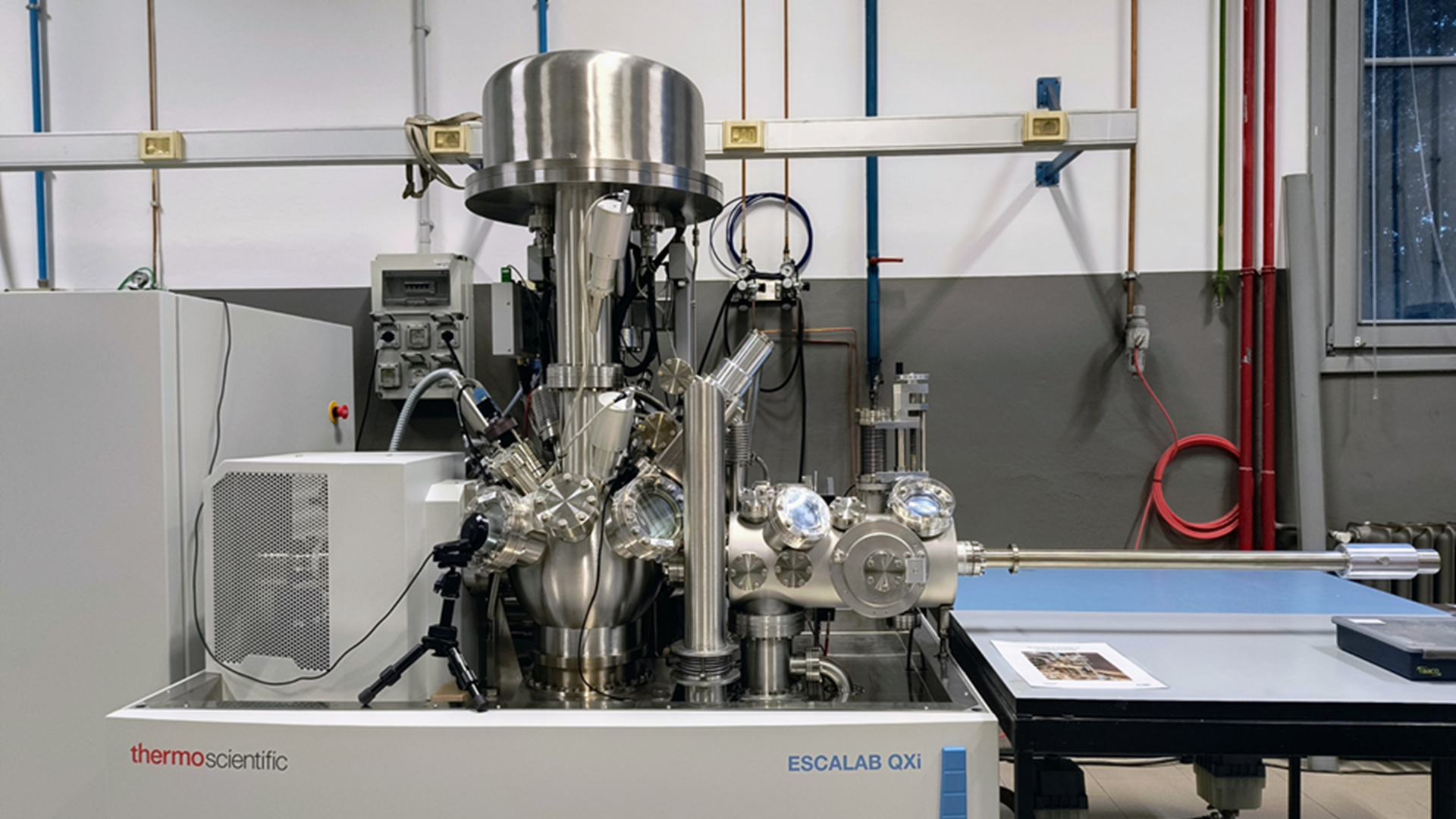ESCALB QXi
General information
The ESCALAB QXi X-ray photoelectron spectrometer is a multi-technique platform for XPS, UPS, REELS and ISS spectroscopies, also equipped with a dual mode (monoatomic and cluster) ion
gun. Moreover it has a charge compensation system to perform XPS on insulating samples. It is equipped with two detector systems: one optimised for spectroscopy, consisting of an array of six- channel electron multipliers, and one for parallel imaging, consisting of a pair of channel plates and a continuous position sensitive detector.

Technical description
ESCALAB QXi X-ray photoelectron spectrometer is a multitechnique-platform for XPS, UPS, REELS and ISS spectroscopies equipped also with a dual mode ion gun for depth profile analysis.
XPS (X-ray photoelectron spectroscopy) provides the composition of the outer few nanometers of a material detailing and quantifying both the elements present and their chemical states. The main XPS features are:
-monochromatic Al/Ag source for large and small area XPS (mm2 - μm2)
-Al/Mg twin source non monochromatic
-magnetic lens
-flood gun for charge compensation
-ARXPS (angle resolved XPS)
-XPS parallel imaging (resolution 2-3 μm)
UPS (ultraviolet photoelectron spectroscopy) uses UV photons (21.2 eV and at 40.8 eV) rather than X-ray. It gives information on the valence band and it allows to determines the electronic work function, valence band maximum and ionization potential.
REELS (reflected electron energy loss spectroscopy) is a technique used to probe the electronic structure of the material at the surface (band gap, if > 2.5 eV). In some cases, it is also able to detect hydrogen, which is not possible with XPS.
ISS (ion scattering spectroscopy) is a highly surface-sensitive technique used to probe the elemental composition of the first atomic layer of a surface.
DUAL MODE ION GUN enables depth profiling of soft materials such as polymers and organic materials using gas cluster ions as well as of hard materials (metals and inorganics) using monatomic ions.
Research areas and applications
The main areas of application include (but are not limited to) catalysis, nanoscience, coatings, corrosion science, semiconductors, solar cells, biomaterials.

